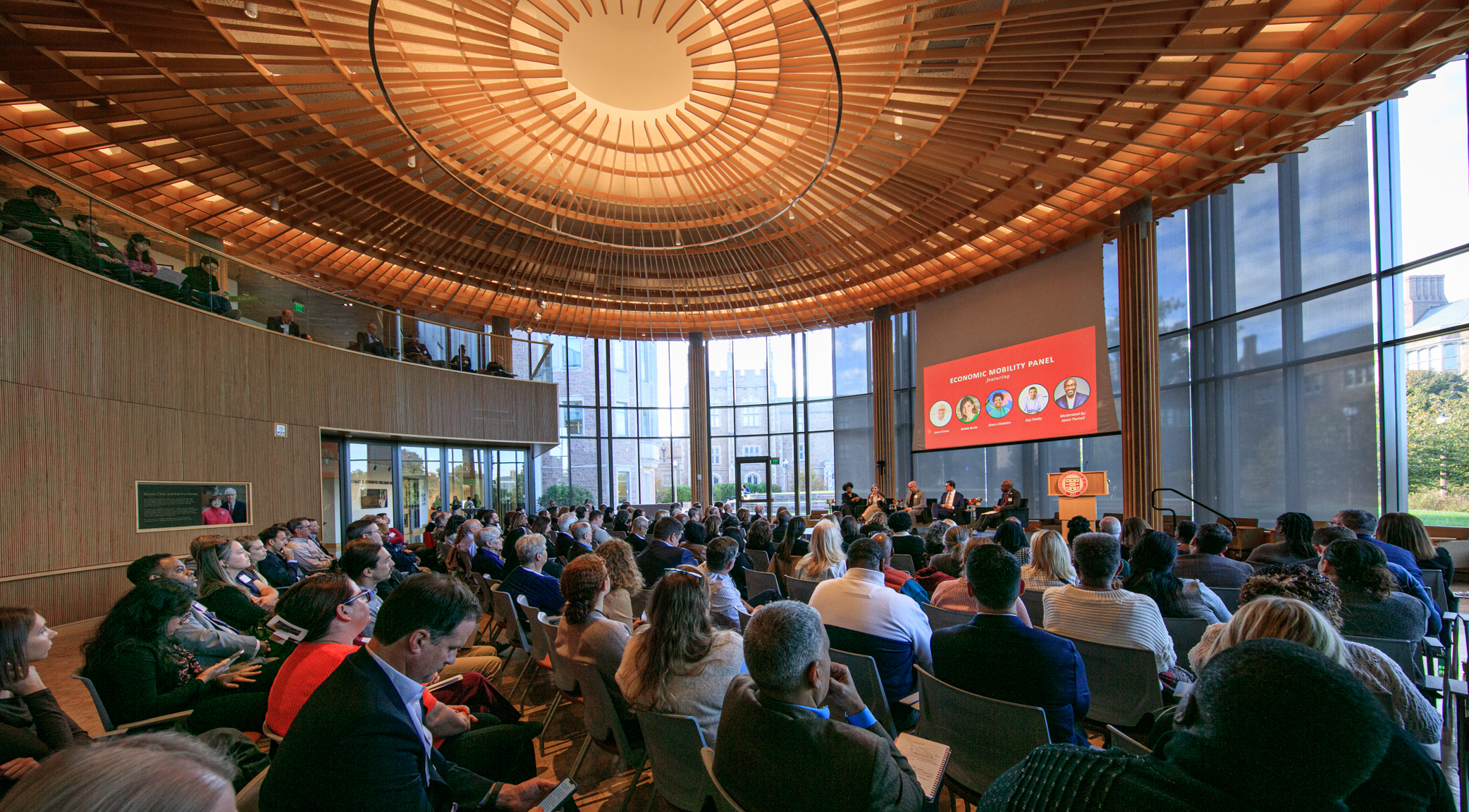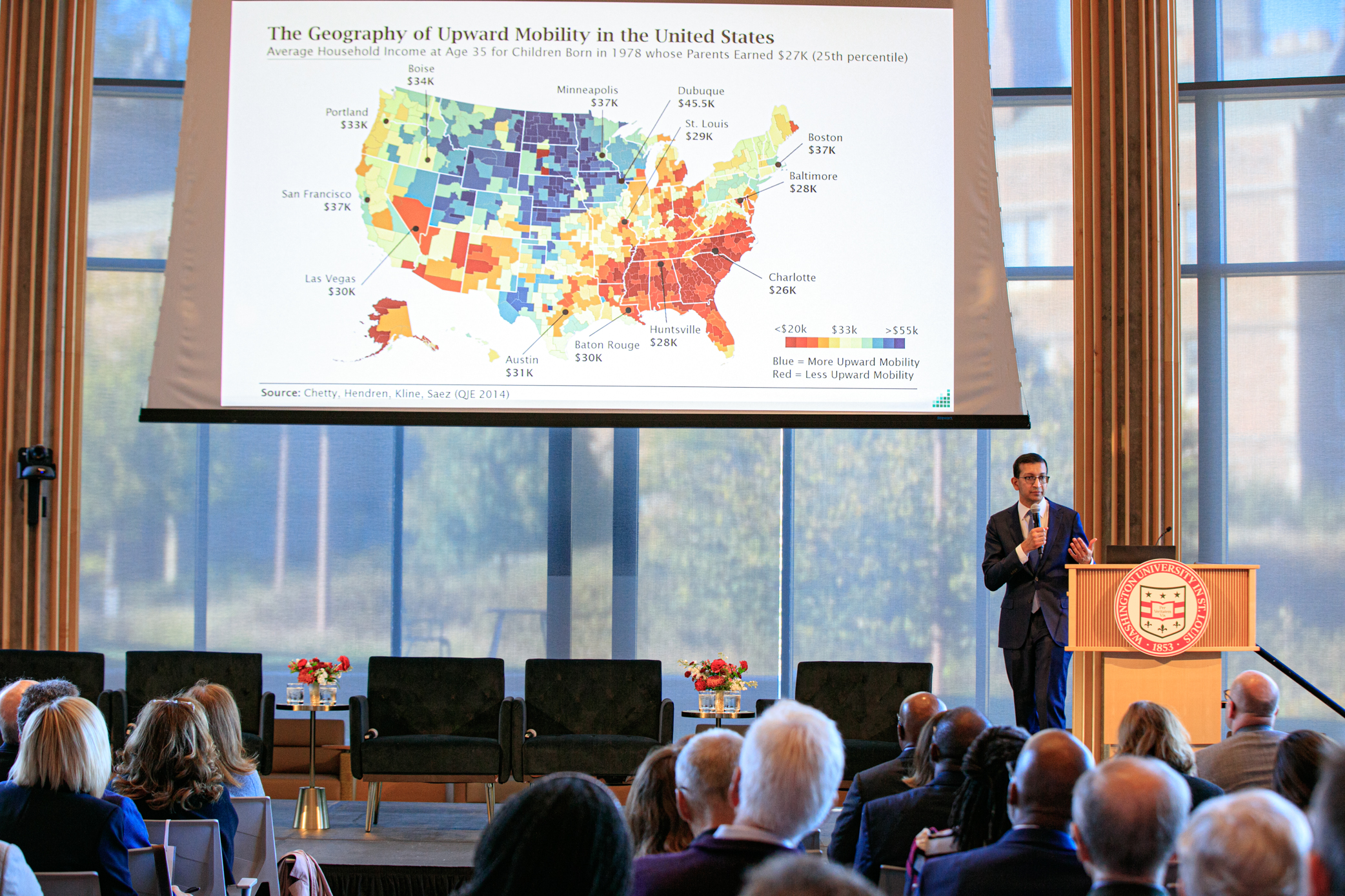Seven Takeaways from St. Louis’s Economic Mobility Summit

At the James S. McDonnell Foundation, we believe that real opportunity should be made available to as many St. Louisans as possible. That’s why we brought several economic mobility leaders together in October for a summit hosted by Washington University in St. Louis. Dr. Raj Chetty, the William A. Ackman Professor of Economics at Harvard University and director of Opportunity Insights, provided the keynote address. Chetty studies big data to uncover pathways to economic mobility. After the keynote, JSMF President Jason Purnell moderated a panel discussion featuring Jason Brown of Envision Utah; Bethia Burke of the Fund for Our Economic Future in Northeast Ohio; and Sherri Chisholm of Leading on Opportunity in Charlotte, North Carolina.
These leaders discussed the data behind economic mobility and offered insights into how their regions are improving access to opportunity. Here are some key takeaways from the summit that we hope will inspire similar change in St. Louis.

1. The American Dream is fading.
First, the bad news. If you were born in 1940, there was a 92% chance that you would go on to earn more than your parents. That percentage has declined over the years, with today’s young adults having only a 50/50 shot at doing better than their parents did.
2. Where you grow up matters.
Like many other urban areas in America, St. Louis faces stark geographic differences between areas with low and high rates of upward mobility. Chetty’s research indicates that children born into low-income households who later move into higher-opportunity neighborhoods will see their average future earnings increase dramatically the earlier they move.
3. Our region is full of “lost Einsteins.”
Children from high-income families are vastly more likely to become inventors or entrepreneurs than children from low-income families, regardless of their math ability in elementary school. According to Chetty, if women, minorities, and children from low-income families invented at the same rate as high-income white men, America’s innovation rate would quadruple.

4. Expand the coalition of those who are invested in economic mobility.
As the leader of the Fund for Our Economic Future in Northeast Ohio, Bethia Burke recommended framing the conversation around economic opportunity rather than inequality, since the positive framing allows more people to get on board when they understand that the outcomes will benefit everyone. With that in mind, Burke suggested helping organizations recognize how their work could align with economic mobility opportunities, thus expanding the idea of their individual missions.
5. Make challenging decisions more approachable.
Jason Brown, who leads Envision Utah, encouraged organizations to provide a variety of data-backed scenarios to help stakeholders make difficult decisions. Being able to visualize potential outcomes moves participants away from abstract debate and into action.
6. Don’t get bogged down in comparisons.
For Sherri Chisholm of Leading on Opportunity, it was a wake-up call when Charlotte, North Carolina, found itself at the bottom of Chetty’s 2014 rankings of metro areas in terms of economic mobility. In the decade since, Charlotte has taken action to improve local access to opportunity for its residents, and it’s paying off. The metro jumped from #50 to #38 on the latest version of the list. Even so, Chisholm emphasized that it’s important not to get caught up in comparisons to other regions, saying it’s best to compare Charlotte to itself.

7. Change is possible.
Chetty shared three policy approaches that have been shown to increase upward mobility: reducing segregation by helping low-income families move to high-opportunity areas, making place-based investments in low-opportunity areas, and amplifying the economic mobility impacts of higher education and workforce training.
The energy at the economic mobility summit was palpable, and it’s our hope at the James S. McDonnell Foundation that participants left feeling ready to recommit to collaborative action to shape a St. Louis where prosperity is attainable to all.
Photography by Suzy Gorman and WashU.
